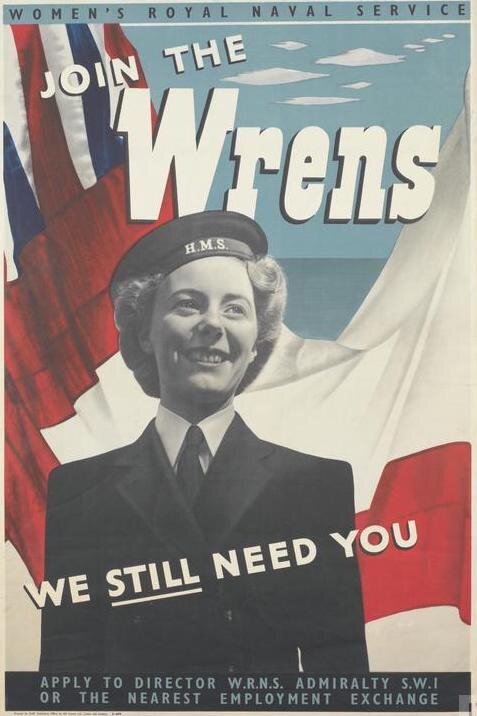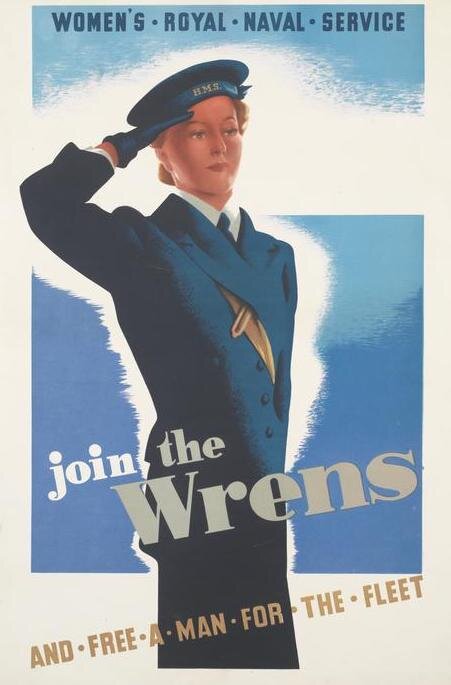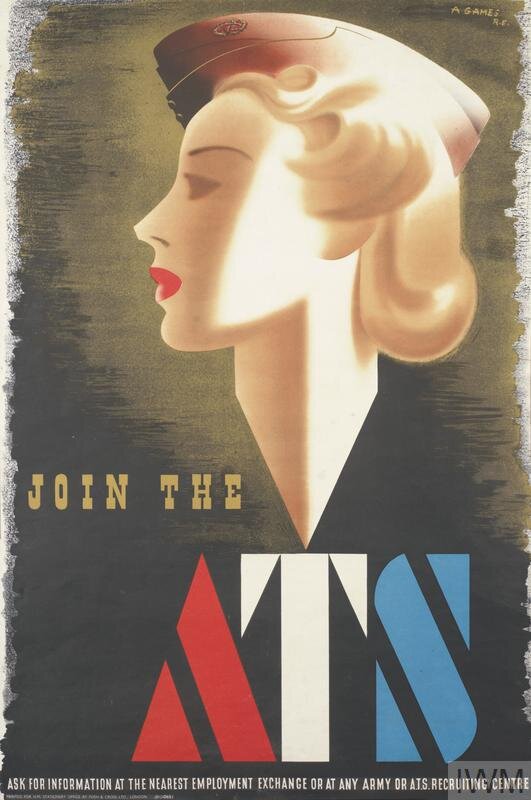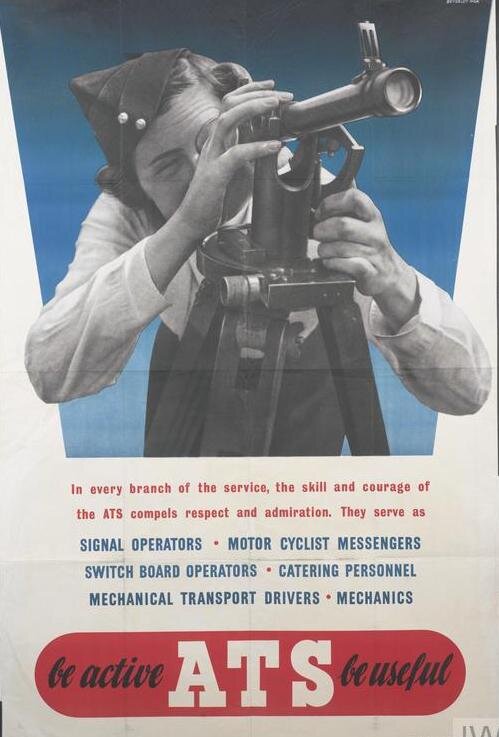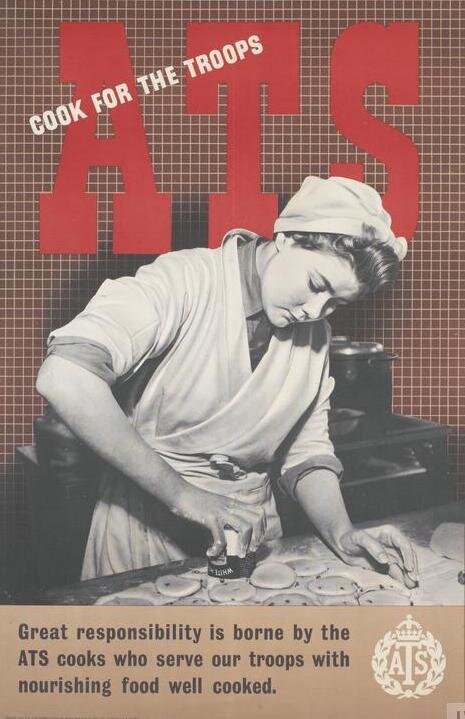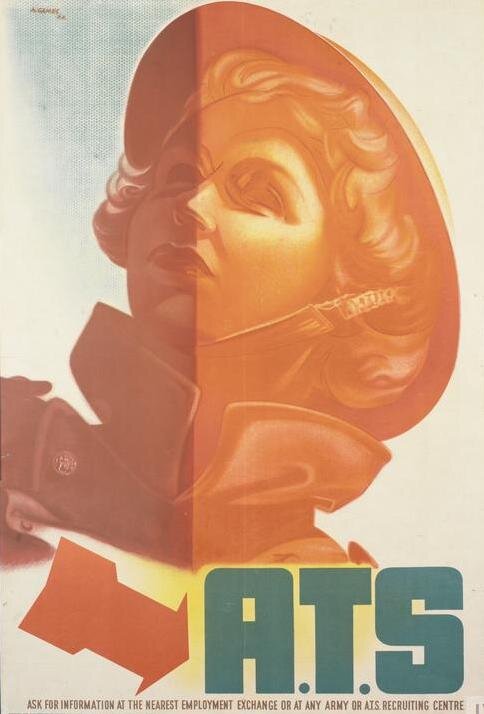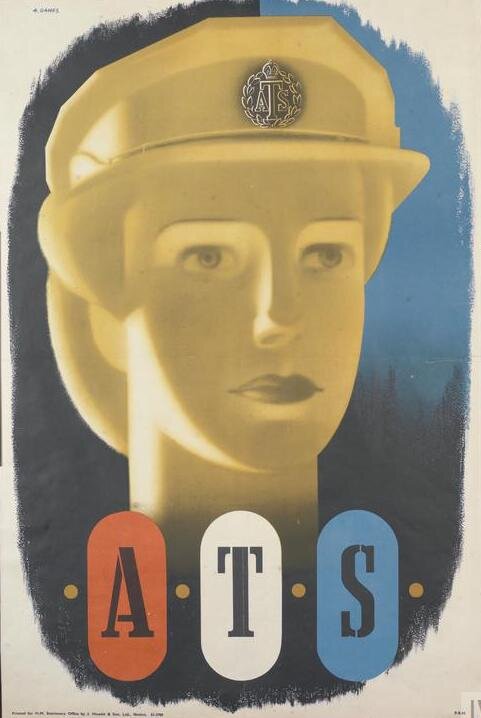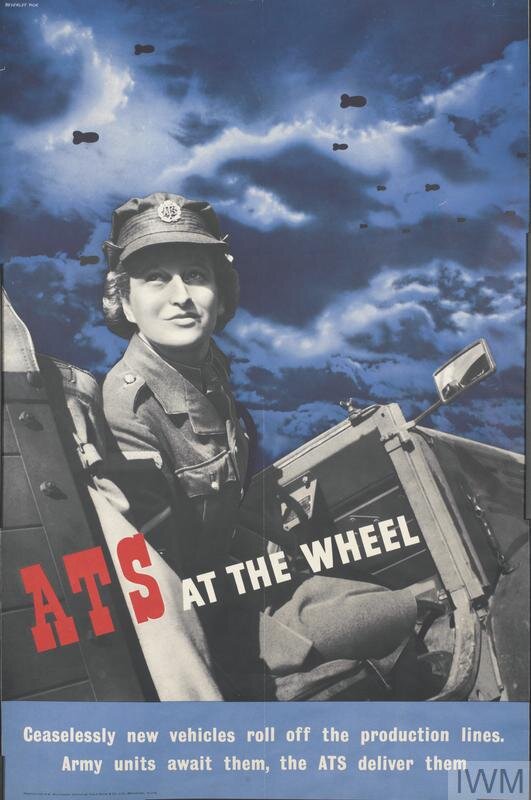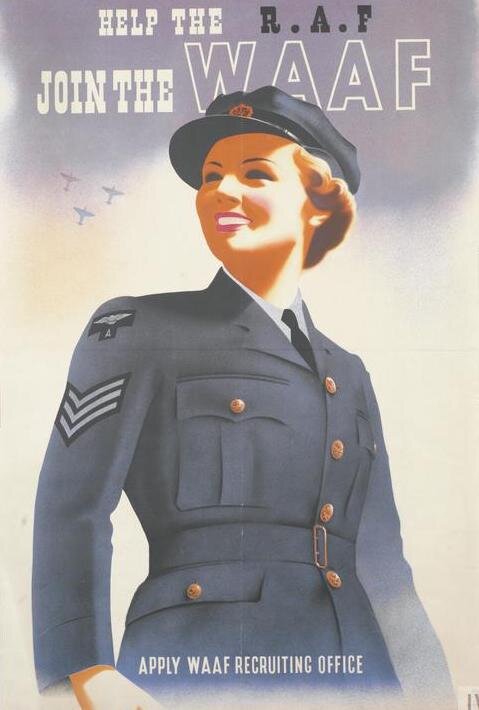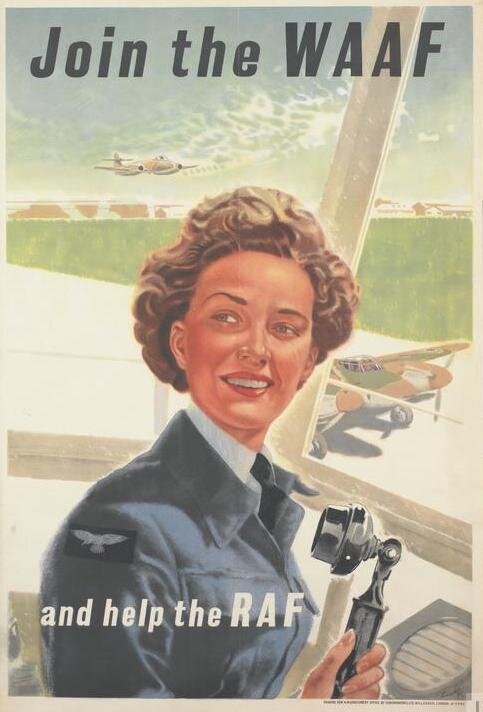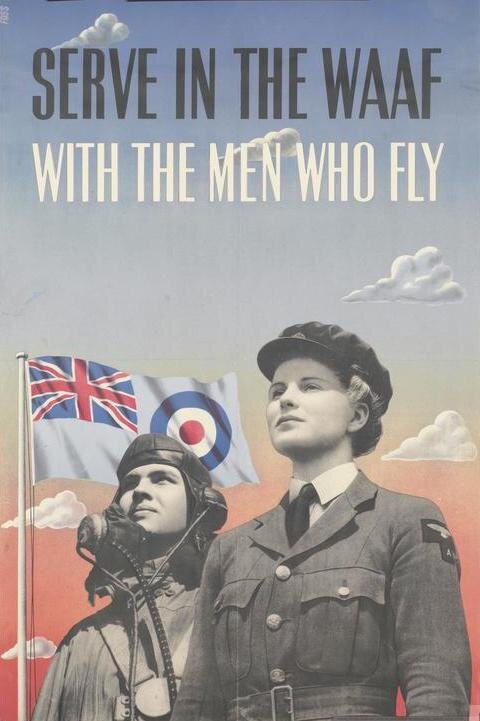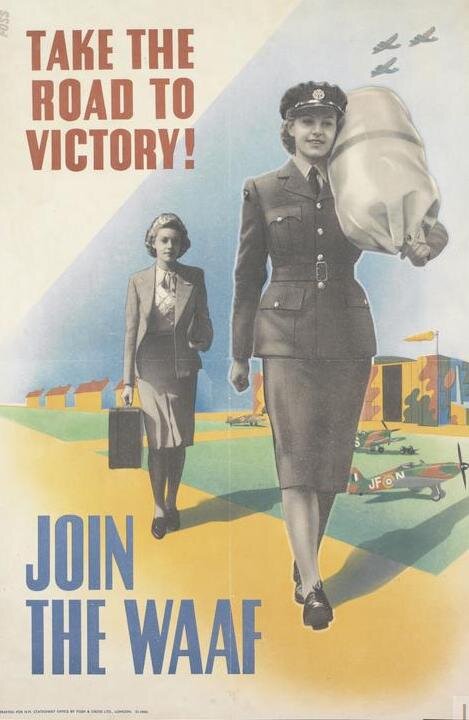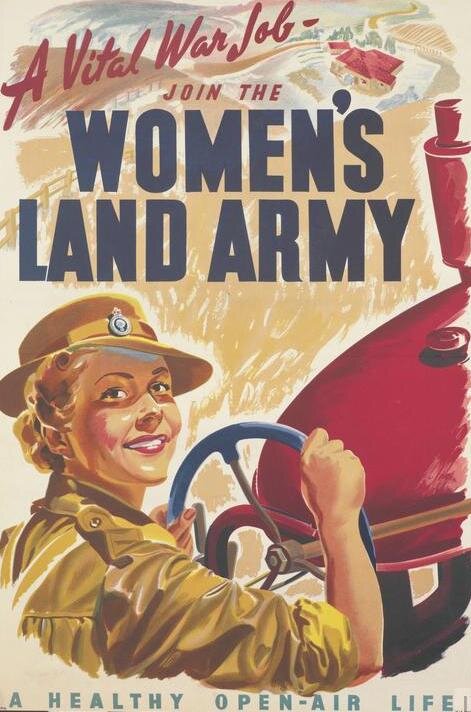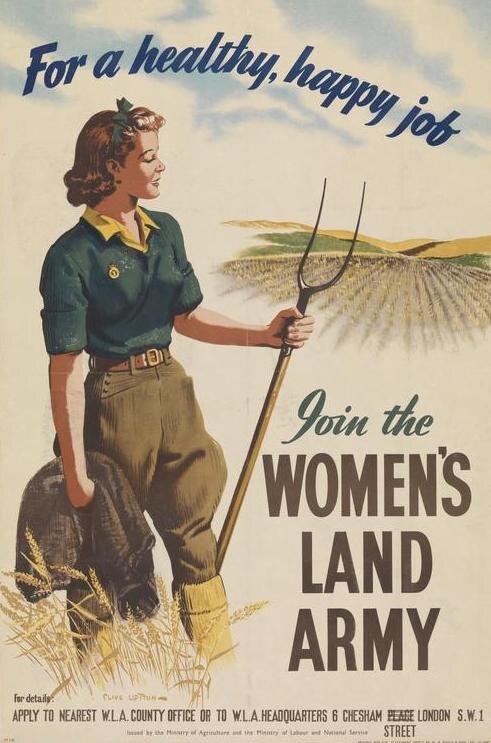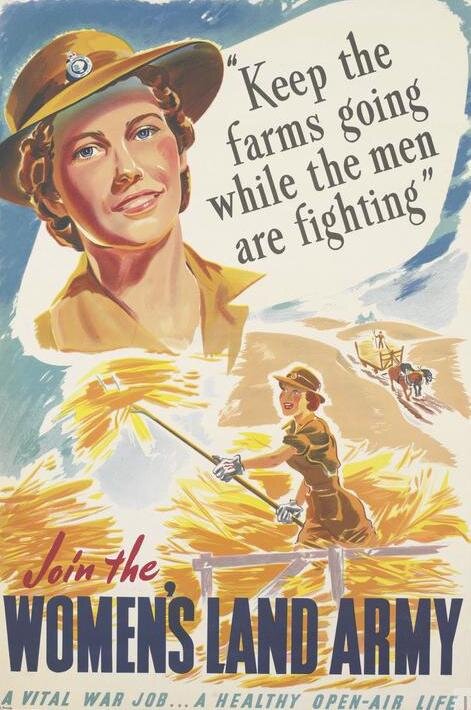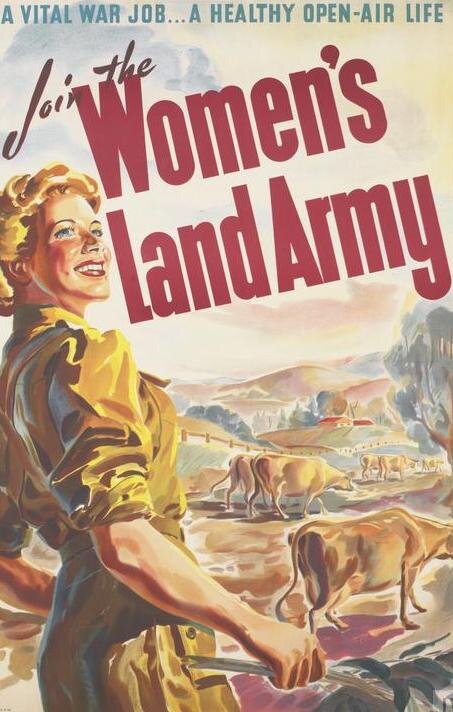As a historical author writing about WWII Britain, one of the things I’m most interested in doing with my books is telling the often-neglected stories of women’s contributions to the war. One of the areas where women were vital was in the various armed services, and you only need to look to recruitment posters to understand how important women’s work was during war.
(All images are courtesy of the Imperial War Museum.)
Conscription in World War II
At first, it was just men who were required to go to war. In the spring of 1939, the Military Training Act passed through Parliament and meant that men between the ages of 20 and 22 were required to do six months of military training. However, when war was declared on September 3rd, the National Services (Armed Forces) Act put into place for all men 18 to 41, although some who were in Reserved Occupations—farming, medicine, engineering, etc.—were excepted from service.
In December 1941, women faced conscription for the first time in the second National Service Act. Men up to the age of 60 were no required to serve, with those as old as 50 being eligible for military service. Childless women between 20 and 30 could be called up to one of the auxiliary services. These included:
Women’s Royal Naval Service (WRNS)
Auxiliary Territorial Service (ATS)
Women’s Auxiliary Air Force (WAAF)
Women’s Transport Service (WTS)
Women’s Voluntary Service (WVS)
Women’s Land Army
In order to say some say in which auxiliary service of the armed forces they ended up in, many women chose to volunteer for a particular service. Recruitment posters from that time show that the services tried to play on a sense of glamor and duty.
WRNS
The women’s auxiliary branch of the Royal Navy, the WRNS (nicknamed “The Wrens”) was the most glamorous of the services. It was known for attracting a posher class of girl, and was thought to have the best uniforms. A Wren might be assigned from a wide variety of roles, including cook, clerk, switchboard operator, electrician, motorcycle dispatch driver, or air mechanic.
ATS
The Auxiliary Territorial Service was the Army’s women’s auxiliary. (It is the ATS that Louise, the heroine of The Light Over London joins early in the book.) These women could take on roles as varied as spotlight operator, Ack Ack Command, clerk, cook, munitions, mail service, and more.
WAAF
The WAAFs supported the Royal Air Force throughout the war. These women could be asked to pack parachutes, crew barrage balloons, cook, maintain aircraft, or work in meteorology or radar. Some did intelligence work, such as working on codes or analyzing reconnaissance photography. What the WAAFs did not do, however, was serve as crew on aircraft. That role was taken on by the women of the Air Transport Auxiliary (the “Atta Girls”) who were civilians.
Land Girls
Although not members of the armed forces, the Women’s Land Army—known as the Land Girls—were vital to keeping Britain fed. The women who became Land Girls did agricultural work. It was often hard physical labor, and it could be an isolated existence because often they lived on the farms where they worked. (Bunking down in town became more common in the last years of the war.)


